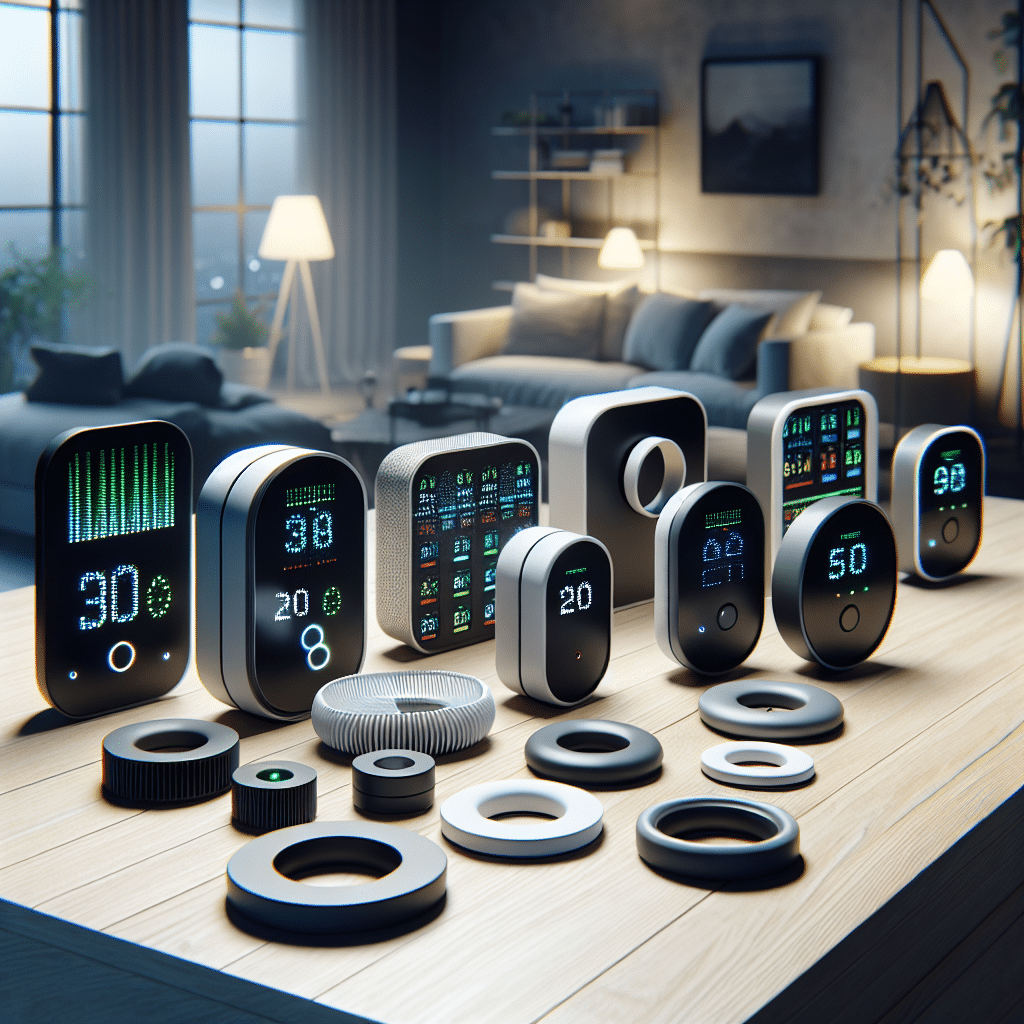Understanding Air Quality Monitors for Homes
What Are Air Quality Monitors?
Air quality monitors are devices designed to measure various pollutants and particulate matter in indoor environments. They provide real-time feedback on the quality of the air you breathe, allowing homeowners to make informed decisions about ventilation, air purification, and overall health.
Types of Air Pollutants Measured
- Particulate Matter (PM): This includes PM2.5 and PM10, which consist of tiny particles that can penetrate deep into the lungs and even enter the bloodstream.
- Volatile Organic Compounds (VOCs): These are chemicals emitted from a variety of sources such as paints, cleaning products, and furniture that can affect both health and air quality.
- Carbon Dioxide (CO2): Elevated CO2 levels can indicate poor ventilation and high occupant density, leading to fatigue and reduced cognitive function.
- Carbon Monoxide (CO): A colorless, odorless gas that can be dangerous in high concentrations, typically produced by incomplete combustion of fuels.
- Humidity: High or low humidity can affect comfort levels and promote the growth of mold and dust mites.
- Temperature: While not a pollutant, it affects the comfort level and can influence air quality by impacting indoor air chemistry and humidity levels.
How Air Quality Monitors Work
Air quality monitors utilize sensors to detect various air pollutants. These sensors can be based on different technologies, including:
- Electrochemical Sensors: These sensors are highly sensitive and can accurately measure gases like carbon monoxide and volatile organic compounds.
- Laser Scattering Sensors: These are often used for measuring particulate matter by using a laser beam that scatters when it hits particles, allowing for size and concentration calculation.
- Metal-Oxide Sensors: These sensors detect gases by measuring the change in conductivity in a metal oxide layer when exposed to pollutants.
Key Features to Consider
- Measurement Capabilities: Look for monitors that provide comprehensive measurements of various pollutants, including particulate matter, CO2, CO, and VOCs.
- Display and Alerts: An intuitive display showing real-time data and alerts can help homeowners respond quickly to deteriorating air quality.
- Smart Connectivity: Wi-Fi or Bluetooth-enabled monitors can integrate with home automation systems, allowing remote monitoring via smartphones.
- Calibration and Accuracy: Sensors should be easy to calibrate and maintain accuracy over time; look for units that offer regular updates.
- Portability: Some models are designed for portability, allowing users to monitor air quality in different rooms or even outdoors.
Benefits of Using Air Quality Monitors
- Health Monitoring: By detecting harmful pollutants, air quality monitors empower homeowners to reduce exposure to hazardous substances.
- Improved Comfort: Maintaining optimal humidity and temperature levels enhances occupants’ comfort, leading to better productivity and reduced stress.
- Energy Efficiency: Knowing when to ventilate helps in saving energy by optimizing HVAC usage based on real-time data.
- Child and Pet Safety: With children and pets more vulnerable to poor air quality, monitoring helps ensure a safe living environment.
Choosing the Right Air Quality Monitor
When selecting the appropriate monitor for your home, consider the following:
- Budget: Prices can range widely based on features and brand. Determine how much you’re willing to invest.
- Size of Your Space: Larger homes may require more than one unit or a model with a high coverage area.
- Specific Needs: Allergies or respiratory conditions may necessitate monitors that specifically track allergens or PM levels.
Integration with Other Home Devices
For homeowners invested in smart home technology, integrating air quality monitors with devices like air purifiers, smart thermostats, and ventilation systems is advantageous. Smart devices can respond automatically to detected air quality changes, enhancing overall indoor air quality without manual intervention.
Maintaining Air Quality Monitors
Proper maintenance is crucial for accurate readings:
- Regularly check for calibration needs; follow manufacturer recommendations.
- Clean the sensors according to the guidelines to prevent dust buildup.
- Replace any filters or components as necessary to ensure longevity and performance.
The Future of Air Quality Monitoring
As the demand for improved indoor air quality rises, future air quality monitors are likely to incorporate advanced technologies such as AI and machine learning for better data analytics. Enhanced smartphone apps and dashboard analytics will make it easier for users to visualize air quality trends and take proactive steps.
Conclusion
Air quality monitors represent an essential investment for enhancing the health and comfort of home environments. With the ability to detect various pollutants, provide real-time analysis, and integrate with smart home systems, these devices empower homeowners to take control of their indoor air quality effectively. By considering the factors outlined above and conducting thorough research, you can select a monitor that best fits your lifestyle and ensures a healthier home atmosphere.
